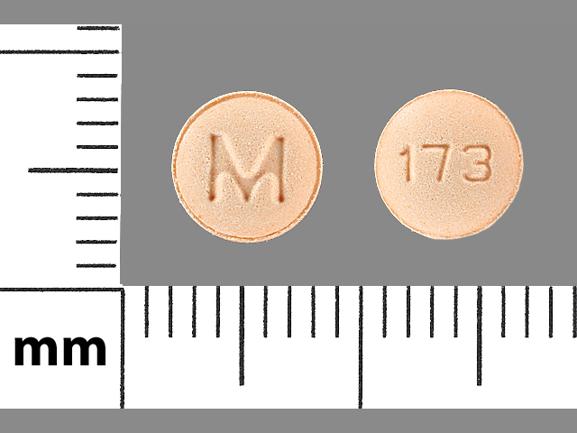Metolazone Dosage
Medically reviewed by Drugs.com. Last updated on Jul 30, 2025.
Applies to the following strengths: 2.5 mg; 5 mg; 10 mg; 0.5 mg
Usual Adult Dose for:
Additional dosage information:
Usual Adult Dose for Hypertension
Initial dose: 2.5 mg orally once a day (Zaroxolyn) or
0.5 mg orally once a day (Mykrox).
Usual Adult Dose for Edema
Initial dose: 5 mg orally once a day (Zaroxolyn) or
0.5 mg orally once a day (Mykrox).
Renal Dose Adjustments
Data not available
Liver Dose Adjustments
Data not available
Dose Adjustments
The initial Zaroxolyn or Mykrox dose may be doubled in 3 days to control hypertension or reduce edema.
High dose metolazone may be required in patients with severe renal dysfunction.
Precautions
Metolazone is contraindicated in patients who are anuric, comatose, or severely obtunded.
Be cognizant of the possibility of the rapid onset of significant hyponatremia or hypokalemia, particularly if metolazone is given with a loop diuretic. This may be especially important in patients with underlying cardiac arrhythmias.
All patients receiving therapy with metolazone should have serum electrolyte measurements done at appropriate intervals and be observed for clinical signs of fluid and/or electrolyte imbalance: namely, hyponatremia, hypochloremic alkalosis, and hypokalemia. In individuals with severe edema accompanying cardiac failure or renal disease, a low-salt syndrome may be produced, especially with hot weather and a low-salt diet. Serum and urine electrolyte determinations are particularly important when the patient has protracted vomiting, severe diarrhea, or is receiving parenteral fluids. Warning signs of imbalance are dryness of mouth, thirst, weakness, lethargy, drowsiness, restlessness, muscle pains or cramps, muscle fatigue, hypotension, oliguria, tachycardia, and gastrointestinal disturbances such as nausea and vomiting. Hyponatremia may occur at any time during long term treatment and, on rare occasions, may be life threatening.
The risk of hypokalemia is increased when larger doses are administered, when diuresis is rapid, when severe liver disease is present, when corticosteroids are given concomitantly, when oral intake is inadequate or when excess potassium is being lost extrarenally, such as with vomiting or diarrhea.
Thiazide-like diuretics have been shown to increase the urinary excretion of magnesium; this may result in hypomagnesemia.
Metolazone therapy may raise blood glucose concentrations possibly causing hyperglycemia and glycosuria in individuals with diabetes or latent diabetes.
Metolazone therapy regularly causes an increase in serum uric acid and can occasionally precipitate gouty attacks even in patients without a prior history of them.
Azotemia, presumably prerenal azotemia, may be precipitated during the use of metolazone. If azotemia and oliguria worsen during therapy of patients with severe renal disease, metolazone should be discontinued.
Cautions should be used when administering metolazone tablets to patients with severely impaired renal function. As most of the drug is excreted by the renal route, accumulation may be observed.
Orthostatic hypotension has been observed in some patients.
Hypercalcemia may infrequently occur with metolazone therapy, especially in patients taking high doses of vitamin D or with high bone turnover states, and may signify hidden hyperparathyroidism. Metolazone therapy should be discontinued before tests for parathyroid function are performed.
Thiazide diuretics have exacerbated or activated systemic lupus erythematosus and this possibility should be considered with metolazone therapy.
Dialysis
Metolazone is not dialyzable by hemo- or peritoneal dialysis.
Other Comments
The maximum recommended daily dose for Zaroxolyn is 5 mg for hypertension and 20 mg for edema.
The maximum recommended daily dose for Mykrox is 1 mg.
Periodic monitoring of electrolytes is recommended, particularly in elderly patients and in patients receiving a high dose.
More about metolazone
- Check interactions
- Compare alternatives
- Pricing & coupons
- Reviews (7)
- Drug images
- Side effects
- During pregnancy
- Drug class: thiazide diuretics
- Breastfeeding
- En español
Patient resources
Other brands
Professional resources
Other brands
Related treatment guides
See also:
Further information
Always consult your healthcare provider to ensure the information displayed on this page applies to your personal circumstances.


